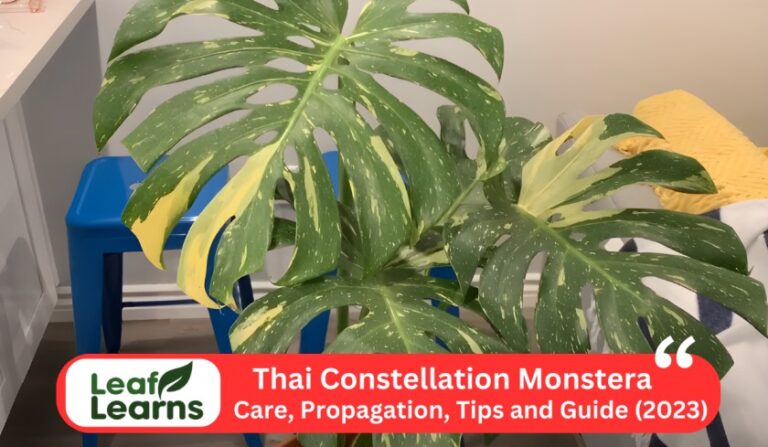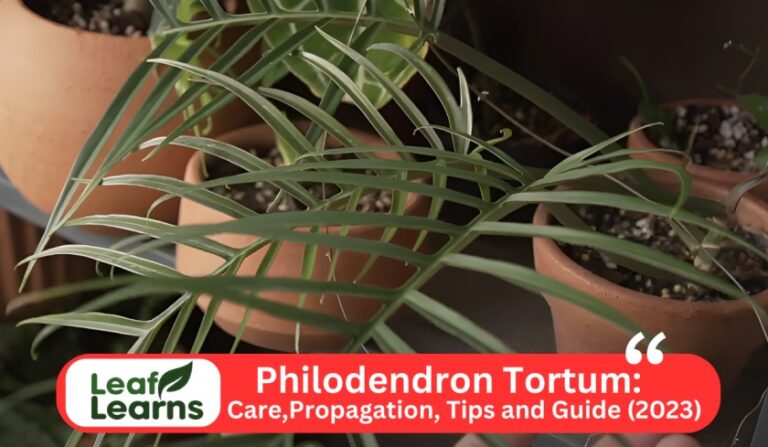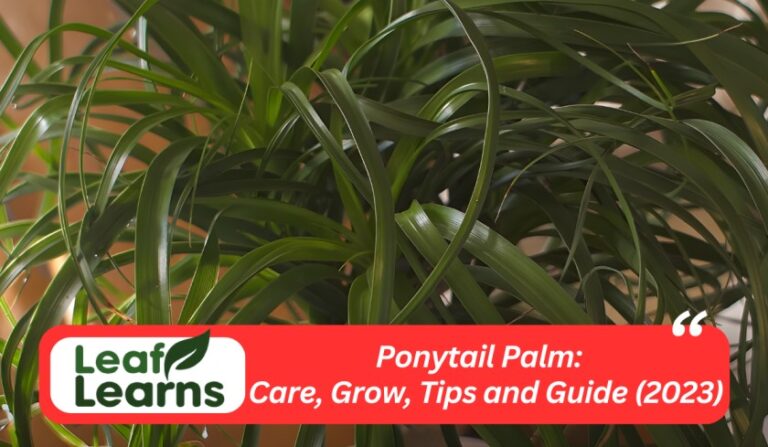How to Grow and Care for Maidenhair Fern: Tips, Guide (2023)
A interesting fern species in the Pteridaceae family is the maidenhair fern, also known by its scientific name of Adiantum (genus). It is widespread, with different species flourishing in varied locations. Depending on the species, this fern typically grows between 12 and 24 inches tall with a variable spread.
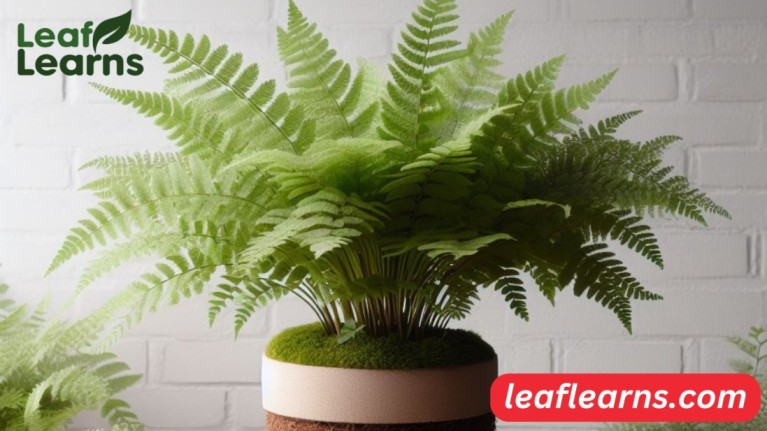
Contents
- 1 Characteristics
- 2 Top Care Tips
- 3 Care for Maidenhair Fern
- 4 Propagating Maidenhair Fern
- 5 How to Grow From Seed
- 6 Pruning
- 7 Growth Rate and Size
- 8 Repotting
- 9 Flowering and Foliage
- 10 Overwintering
- 11 Common Pests
- 12 Plant Diseases
- 13 How to Get to Bloom
- 14 Problems and Solutions
- 15 Toxicity of Maidenhair Fern
- 16 Pets
- 17 Maidenhair-Fern Appearance
- 18 Varieties/Types
- 19 Suggested Use
- 20 FAQs
Characteristics
Its green leaves, which may be 1 to 3 feet tall and have a minor color variation across various types, are one of its most recognizable characteristics. Maidenhair ferns need shelter from extremely cold or hot weather in order to survive. They should be trimmed to eliminate brown or dead fronds since they require moderate to high humidity levels.
When planted inside, these ferns thrive in filtered, indirect sunlight, but when grown outside, they require some shade to complete shade. They require consistently wet, rich, organic soil that drains properly and is not waterlogged in order to assure their well being.
| Common name | Maidenhair-Fern |
| Scientific Name | Adiantum (genus) |
| Family | Pteridaceae |
| Distribution | Worldwide, with various species in different regions |
| Plant type | Fern |
| Size | 12-24 inches in height, spread varies |
| Leaf Colour | Bright green, with variations in some species |
| Leaf size | 1 to 3 feet height |
| Temperature | moderate temperatures; Avoid extreme cold or heat |
| Humidity | Moderate to high humidity levels |
| Pruning | Regular removal of brown or dead fronds |
| Light requirement | Indirect, filtered sunlight for indoor growth; Partial to full shade outdoors |
| Soil requirement | Well-draining, rich, organic soil |
| Watering Need | Consistent moisture; soil should be evenly moist but not waterlogged |
| Propagation | Division, spore propagation, or rooting stem cuttings in water |
| Flower colour | Light green |
| Lifespan | Perennial, can live for several years with proper care |
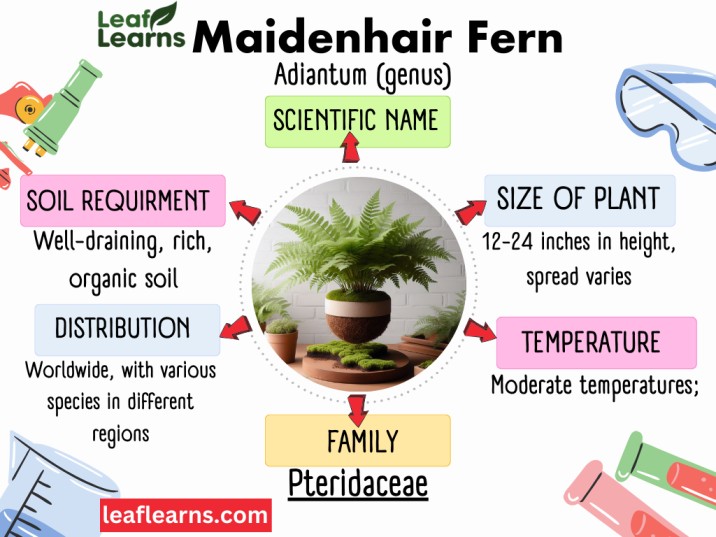
Top Care Tips
Ensure Adequate Humidity: Maidenhair-ferns need moderate to high amounts of humidity to flourish.
By often spraying the plant or utilizing a humidity tray, you can maintain humidity.
Direct Sunlight: Place your Maidenhair -Fern indoors where it may get filtered, indirect sunlight.
Avoid the sun’s direct rays since they might burn the fragile foliage.
Maintain a consistent moisture level in the soil while avoiding waterlogging.
When you can touch the top inch of dirt, it’s time to water.
Regular Pruning: Remove dead or brown fronds to promote new growth and preserve the beauty of the plant.
Use rich, organic soil that drains properly to maintain good root health.
When your fern outgrows its pot or the dirt becomes compacted, think about repotting it.
Care for Maidenhair Fern
Light Requirement
It prefer soft, diffuse light. They want a light that is like a sheer veil between them and the sun.
Avoid intense sunlight since it might damage its delicate foliage.
Put them in locations that get filtered, gentle light. Keep in mind that these ferns prefer a cozy, shaded environment; thus, to maintain their health and happiness, keep them away from direct sunlight.
Water Requirements
Make sure your Maidenhair-Fern receives the appropriate quantity of water to take proper care of it. These ferns prefer regularly damp, but not drenched, soil.
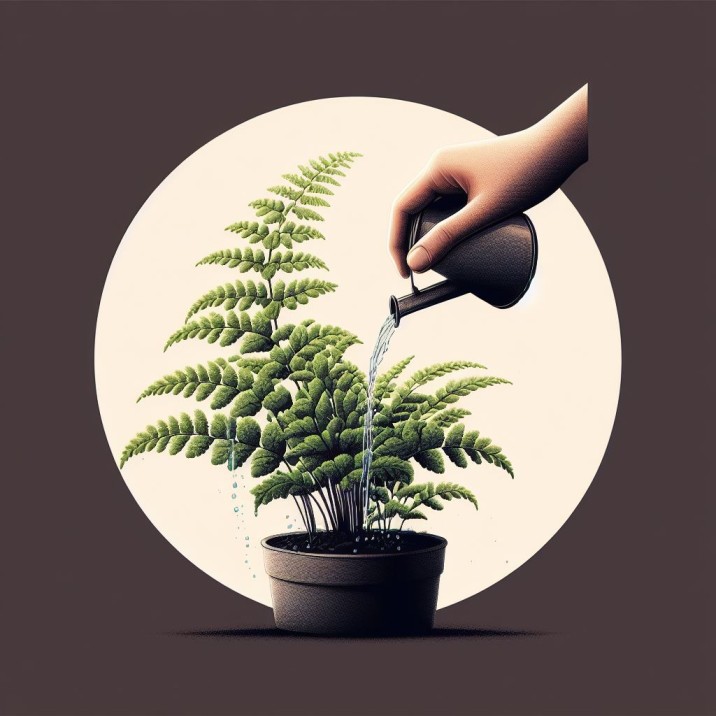
The soil should feel somewhat damp, but not soaking wet, like a sponge.
When the top inch of soil begins to feel a bit dry to the touch, water it.
Your Maidenhair-Fern requires the proper soil to thrive. Use soil that allows water to pass through readily to prevent it from becoming too wet.
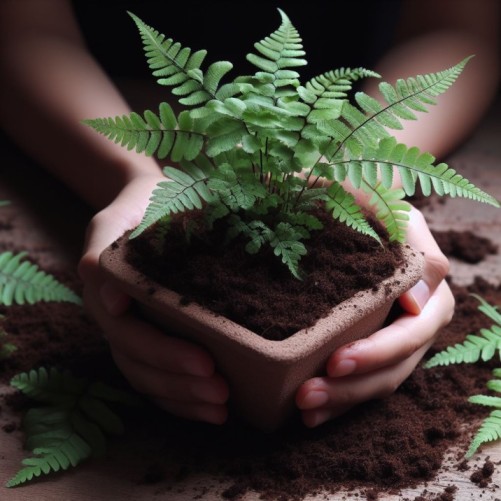
This fern loves fertile, airy soil that is rich in nutrients. So that its roots may breathe and develop healthily.
Keep in mind that quality soil is like nutritious nourishment for your plant, enabling it to remain strong and attractive. So pick organic, well-draining soil, and your fern will be grateful
Temperature Requirement
When it comes to temperature, maidenhair-ferns want to feel comfortable. Extreme heat or cold do not appeal to them.
Keep them warm and comfortable, preferably in your house. Don’t allow them to perspire in the heat or shiver in the cold.
Humidity Requirement
They prefer to reside in areas with a lot of humidity in the air. Mist them frequently, or place a tray of water nearby to keep them content. Their gorgeous, delicate leaves are grown thanks to the additional moisture.
So keep in mind that humidity is essential for maintaining a Maidenhair-fern’s health and vitality. They will thrive if you make them feel at ease.
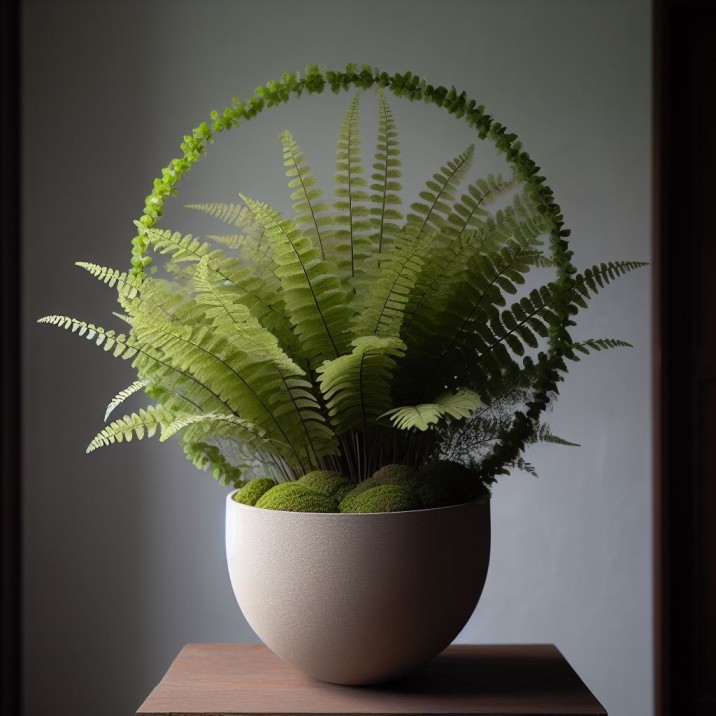
Fertilizer Requirement
Low-fertilizer diets are ideal for Maidenhair-fern growth.
During their growing season, which is often spring and summer, these sensitive plants demand a diluted, balanced liquid fertilizer every 4-6 weeks.
Because they are delicate, dilute the fertilizer to half the recommended dosage to avoid overfeeding. During the winter months dormancy, avoid fertilizing.
Potting Requirement
Selecting the proper container is crucial for Maidenhair-Fern’s care. For protection against overwatering, choose a pot with drainage holes.
The fern’s roots will have room to expand in the new pot if it is somewhat bigger than the one it is now in. Use organically rich, airy soil that drains well.
Every two to three years, repotting maintains the plant’s health. Your fern will grow and be content if you follow these potting guidelines.
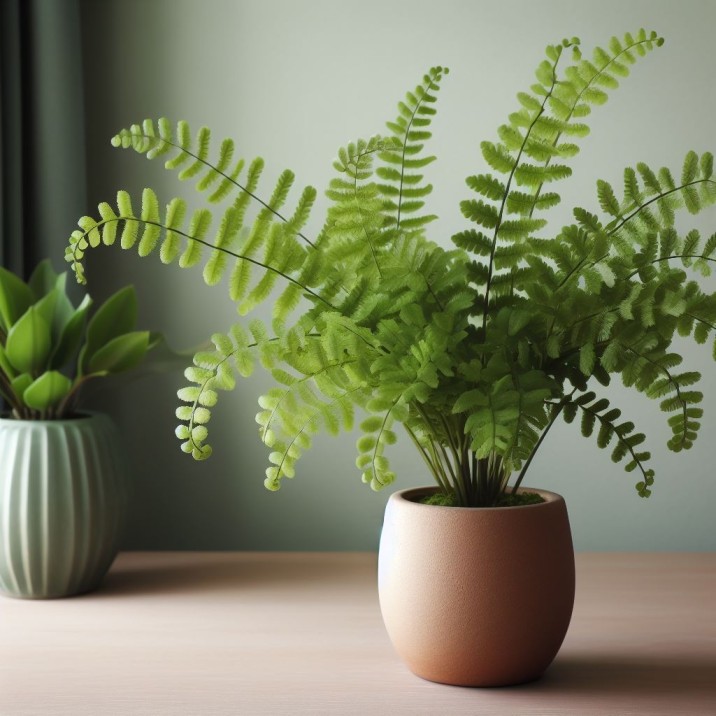
Propagating Maidenhair Fern
Division: The adult fern should be gently divided into smaller clumps, ensuring that each has roots. Put these divisions into fresh containers.
Spore Propagation: Spores can be planted on damp peat moss by gathering them from the underside of mature fronds. To provide a humid atmosphere as they develop into young ferns, cover with a plastic bag.
Stem Cuttings: Healthy stems should be clipped and placed in water or another wet growth medium. Put them in pots once they have roots.
Layering: A healthy frond can be bent to meet the ground, secured, and allowed to root. Transplant it after cutting it from the mother plant.
Offsets: Around the root, several species grow offsets or tiny plantlets. Separate these, then plant them.
How to Grow From Seed
Gather Spores: On the undersides of mature fronds, Maidenhair-Ferns create microscopic spores rather than seeds. Brown spots are how these spores appear.
build a terrarium Peat moss and perlite together should be placed in a shallow container. Avoid making it wet; just moisten it.
Sprinkling Spores: Sprinkling spores across the top of the soil.
Cover and Hold Off: To make a little greenhouse, cover the container with plastic wrap or a transparent lid. Put it in an area with strong, indirect lighting.
Be patient: The emergence of small ferns might take many months. Move them to a bigger pot once they are big enough..
Pruning
For this plant pruning entails cutting off any brown or dead plant portions.
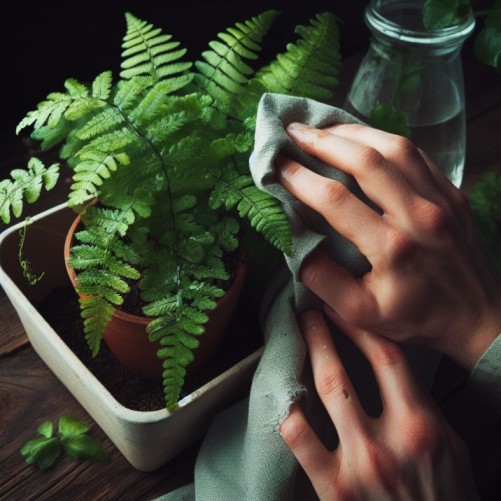
It’s similar to giving your fern a trim to keep it looking good and organized.
By doing this, you promote the growth of new leaves and ensure that your fern maintains its aesthetic appeal.
Growth Rate and Size
Maidenhair-ferns may grow to a height of 12 to 24 inches and develop at a moderate rate.
Some species have fronds that are smaller or bigger than others, hence their sizes vary. Imagine them as being like a delicate, green growth that grows slowly but steadily.
Remember that the height of their graceful, bright-green leaves can range from 1 to 3 feet. These ferns may make a beautiful addition to any interior or outdoor vegetation with the right care.
Repotting
When a Maidenhair-Fern outgrows its pot or the soil becomes stale, it has to be repotted, which entails providing it with a new container. This is how:
Pick a Larger Pot: Select a pot with drainage holes that is somewhat bigger.
Use brand-new, well-draining soil.
Smooth Transition: Gently transfer the plant from its old pot to the new one.
After repotting, give your fern a good soak in water.
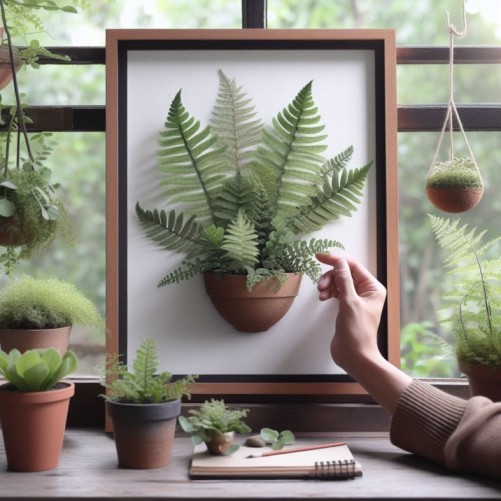
Flowering and Foliage
More than their blooms, maidenhair-ferns are famous for their lovely leaves.
Their delicate, fluffy, brilliant green foliage provides an air of refinement to any setting.
The majority of the attractiveness of these ferns stems from their luscious, beautifully cut leaves, which are rarely seen on them.
Overwintering
For Maidenhair to overwinter, more care must be taken throughout the colder months.
Bring your fern indoors to a warm location with indirect light as the weather turns cool.
Keeping it away from heaters and draughts will prevent it from drying out.
Less often water it, but make sure the soil doesn’t entirely dry up.
Common Pests
Its may encounter bothersome enemies like mealybugs and aphids. The delicate leaves of your fern are a favorite feast for these little creatures.
Keep an eye out for any little intruders to safeguard your plant, and gently wipe them away with a soft cloth or some soapy water. Regular inspections will keep your fern healthy.

Plant Diseases
Plant ailments resemble human illnesses in many ways.These ailments are brought on by microscopic organisms like bacteria, fungi, or viruses. They may cause the leaves to become spotty, turn brown, or even drop off.
Make sure your fern has adequate airflow, and regular watering, and avoid handling it with soiled hands to keep it healthy. Quickly address any issues you see to keep your fern healthy!
How to Get to Bloom
The rich, green foliage of maidenhair is well recognised, yet unlike other plants, they rarely produce beautiful blooms.
Instead, spores found on the undersides of their leaves are how they reproduce. Focus on creating the ideal circumstances for your plant fern, such as incandescent light, regular wetness, and high humidity.
They might not blossom in the conventional sense, but if you take good care of them, they’ll reward you with their lovely, delicate fronds
Problems and Solutions
Problem: Browning or crispy leaves.
Solution: Ensure consistent humidity, keep the soil evenly moist (but not soggy), and avoid drafts and direct sunlight.
Problem: Yellowing leaves.
Solution: Adjust watering to keep soil moisture uniform and steer clear of overfertilizing.
Problem: Mealybugs or aphids.
Solution: Neem oil or an insecticidal soap may be used, and the plant should be inspected and cleaned often.
Problem: Slow growth.
Solution: If the fern is root-bound, report it, maintain a sufficient humidity level, and provide mild fertilizer during the growth season.
Problem: Wilting or drooping fronds.
Solution: When the top inch of soil feels dry, water the plant well and spritz it to increase humidity.
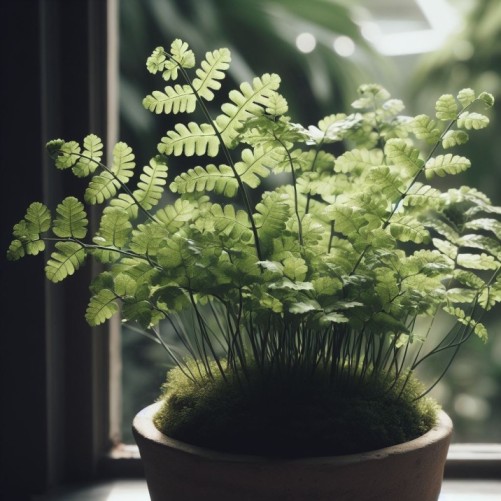
Toxicity of Maidenhair Fern
Dogs and cats cannot be exposed to maidenhair-ferns. Pets might become ill if they chew or consume the leaves.
Their stomachs may get irritated by the fern’s ingredients, which might cause symptoms including vomiting and diarrhea.
Place the fern out of reach of your animal pals and keep an eye on them when they get close to ensure their safety.
Pets
Although they don’t require pets, this plant do like a few things. Yes, plants are talkative, so feel free to engage them in conversation.
Additionally, they enjoy regular hydration in their soil, much like having a reliable companion. As you wouldn’t want your pet to be uncomfortable, make sure they’re not too hot or chilly.
Don’t forget to provide them with some shade as well; they prefer it to harsh sunshine. Your fern will be a content plant if you follow these easy care instructions!

Maidenhair-Fern Appearance
- The leaves of maidenhair-ferns are delicate and fluffy.
- The leaves are a vivid green and resemble little fans.
- The average length of each leaflet is only a few inches.
- On black, wiry stalks, they develop.
- The overall look is delicate and lacy.
- The fern may grow between 12 and 24 inches tall.
Varieties/Types
- Adiantum Raddianum: Common indoor choice with delicate fronds.
- Adiantum Fragrans: Known for its fragrant foliage.
- Adiantum Capillus-Veneris: A widespread outdoor variety.
- Adiantum Venustum: Resilient and cold-tolerant fern.
- Adiantum Pedatum: Features fan-shaped fronds and native to North America.
- Adiantum Tenerum: Tropical variety with smaller fronds.
- Adiantum Aleuticum: Western native, perfect for shaded gardens.
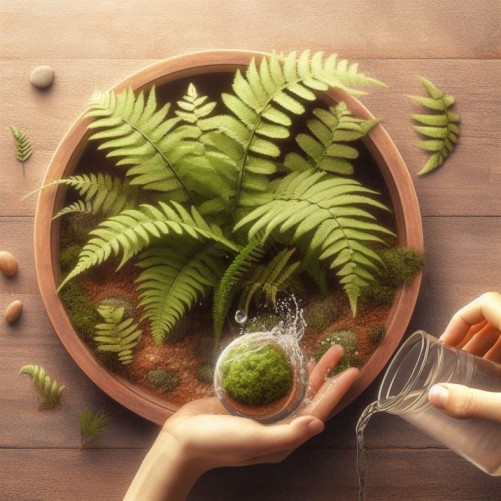
Suggested Use
Maidenhair-ferns’ luxuriant foliage enhances indoor areas and lends a sense of refinement to your home’s interior design.
Terrariums: These ferns make a beautiful mini-forest in tiny garden setups like terrariums.
Office plants: By putting them on your desk or at the office, you may create a tranquil and refreshing atmosphere there.
Maidenhair-Ferns make nice and easy-to-care-for presents for anyone who enjoys plants.
Natural air purifiers: By removing contaminants, they contribute to bettering the quality of indoor air.
For a distinctive show, use them in live wall art or vertical gardens.
FAQs
What is the preferred light condition for Maidenhair Ferns?
Indirect light is ideal for maidenhair-ferns, which should be protected from strong direct sunshine.
How often should you water a Maidenhair Fern?
When the top inch of the soil feels just a little bit dry to the touch, water should be applied to maintain a constant moisture level without overwatering.
What type of soil is ideal for Maidenhair Ferns?
Well-draining, rich, organic soil that allows water to flow through easily is recommended for these ferns.
What should you avoid regarding temperature for Maidenhair Ferns?
Avoid areas of extreme cold or heat; maidenhair-ferns require a temperate climate.
How can you increase humidity for Maidenhair Ferns?
By periodically spraying the plant or having a tray of water nearby, you may raise the humidity.
When is the best time to fertilize Maidenhair Ferns?
During the growing season, which is normally in the spring and summer, Maidenhair Ferns should be fertilised using a balanced, water-soluble fertiliser diluted to half strength.
What should you do if your Maidenhair Fern’s leaves turn brown or crispy?
Ensure constant humidity, keep uniform soil moisture, stay out of draughts, and stay out of direct sunshine to prevent browning or crispy leaves.


